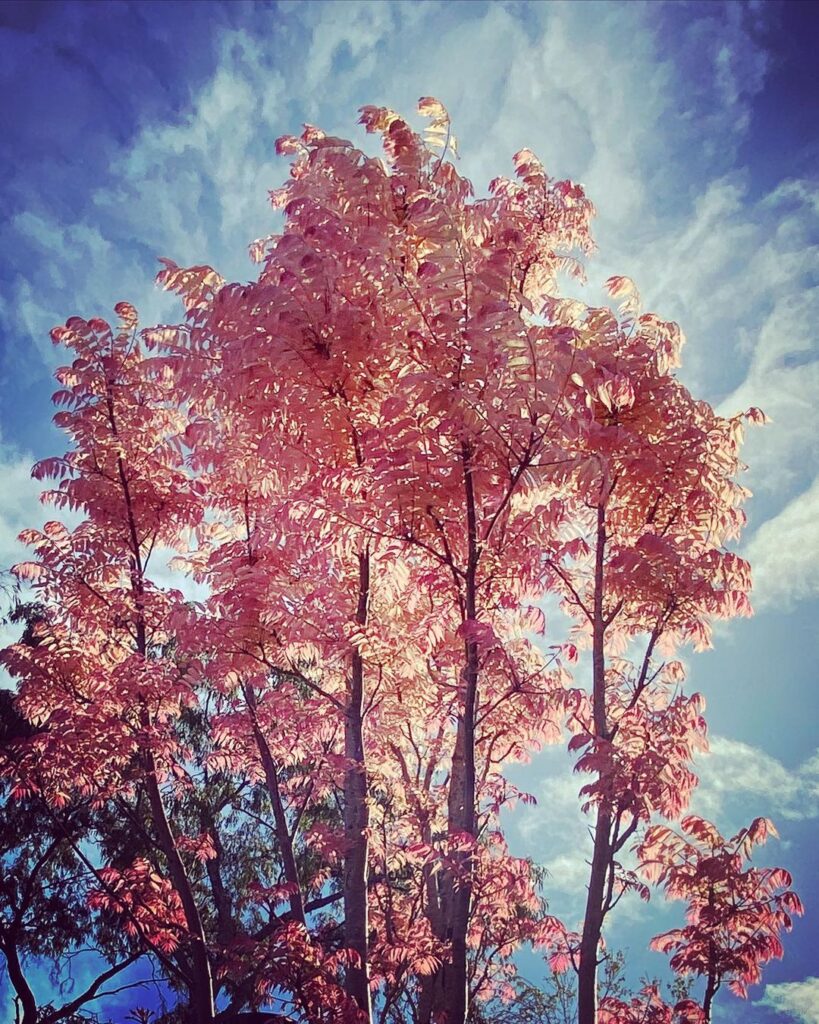Learn How to Grow Toona Sinensis ‘Flamingo’ with our expert tips and add this ornamental tree with colorful leaves to your garden.
Toona Sinensis ‘Flamingo’ is a stunning ornamental tree with pink variegated foliage that adds a pop of color to any garden. Growing this tree requires some specific care and attention, but with the right approach, it can thrive and become a beautiful centerpiece of your outdoor space.
Common Names: Chinese Toon, Red Toon, Beef and Onion Plant, Chinese Cedar, Chinese Mahogany, Chinese Cedrela,
Botanical Name: Cedrela sinensis syn.
USDA Zones: 5-9
Learn How to Grow Crocodile Fern Indoors in Pots
Toona Sinensis ‘Flamingo’ Tree Profile

Toona Sinensis ‘Flamingo’ belongs to the mahogany family. It is native to China and other areas of East Asia. This tree is commonly known as Chinese Mahogany or Chinese Toon and is admired for its striking appearance.
This deciduous tree can reach up to 40-50 feet in height and 20-30 feet in spread. The lance-shaped leaves of this tree are pinnate. They feature 10-30 leaflets that change from pinkish-red in the spring to variegated pink and cream in the summer and finally to bright golden-yellow in the fall before dropping off for the winter.
In spring, the Toona Sinensis ‘Flamingo’ tree bears small, unremarkable flowers that give way to brown fruit pods containing seeds.
Learn to Grow Ashwagandha in the Home and Garden
Propagating Toona Sinensis ‘Flamingo’
Propagating Toona Sinensis ‘Flamingo’ trees through cuttings is a common method because it yields new plants that are genetically identical to the parent plant.
- Select a healthy Toona Sinensis ‘Flamingo’ tree and take 6-inch cuttings with at least two sets of leaves during spring or early summer.
- Remove the foliage from the base of the cutting.
- Dip the cut end into the rooting hormone.
- Plant it in a well-draining soil mix.
- Cover the pot with a plastic bag. It will create a greenhouse effect.
- Keep the pot in a warm, bright location away from direct sunlight.
- Within a few weeks, the cutting will root and begin to grow.
How to Grow Toona Sinensis ‘Flamingo’ Trees
Sunlight
Grow Toona sinensis ‘Flamingo’ in full sun to partial shade, where the tree gets at least 4-6 hours of direct sunlight per day. While it can tolerate some shade, it may impact the vibrancy of its foliage colors.
To prevent leaf scorching in regions with hot summers, partial shade during the hottest hours of the day is recommended. Keep in mind that the light needs of the Toona Sinensis ‘Flamingo’ tree may differ depending on the climate and location where it is planted.
Soil
For optimal growth of Toona Sinensis ‘Flamingo’ trees, it is essential to plant them in well-draining soil with a slightly acidic to neutral pH level. These trees can adapt to different soil types, such as clay, loam, and sandy soil, but adding compost or well-rotted manure before planting can provide them with essential nutrients.
Note: Avoid growing this tree on north-facing sites and heavy, wet soil.
Water
Water your Toona sinensis ‘Flamingo’ once a week during the growing season or when the topsoil feels a bit dry to the touch. It is essential to bear in mind that the watering needs of this tree rely on climate, season, and soil type.
The frequency may increase to twice a week during hot and dry conditions. During winter, watering should be reduced to once every two weeks. The watering frequency also depends on the soil type and weather conditions.
Temperature
It can withstand temperatures ranging from -10°F to 20°F (-23°C to -6°C) and is considered hardy in USDA zones 6 to 9. However, it is susceptible to damage from both extreme cold and heat, so it’s best to provide protection during periods of temperature fluctuations.
Toona sinensis ‘Flamingo’ can withstand high temperatures up to 90°F (32°C) during the summer. However, it is crucial to keep the tree well-hydrated during hot weather to avoid leaf dehydration and browning.
Read How to Grow Fig Leaf Squash
Toona Sinensis ‘Flamingo’ Tree Care
Fertilizing
To promote healthy growth and foliage, use a balanced liquid fertilizer in early spring. Alternatively, you may dilute the fertilizer to half its potency and apply it monthly while the tree is actively growing.
It’s important to prevent fertilizing the tree during the fall or winter season.
Pruning
Regular pruning is essential for the upkeep of Toona sinensis ‘Flamingo’ trees. It’s best to carry out the pruning during late winter or early spring before new growth emerges.
During this process, it’s important to eliminate any dead or diseased branches. Thin out any overcrowded branches to enhance air circulation.
Note: With favorable conditions, the tree will grow rapidly and produce suckering roots that form a clump. Although it can take a decade to reach its full height, once the clumping process begins, you can trim taller trees to maintain a smaller size.
Check Fern Leaf Cactus Care Guide
Pests and Diseases
Though Toona sinensis ‘Flamingo’ trees are generally immune to pests and diseases, they can still fall victim to scale insects, aphids, and spider mites. You can control these pests by using insecticidal soap or neem oil.
Ensuring good air circulation and avoiding overhead watering can help prevent diseases in these trees.
Landscaping with Toona sinensis
To enjoy a burst of pink for a few weeks in spring, consider planting a Judas tree and/or a magnolia tree in close proximity. Combining these trees will create a stunning display of pink hues that can last throughout April and May. For added flavorsome pleasure, consider planting near a purple wisteria to take in its delightful fragrance. This arrangement is sure to make your garden feel pretty in pink!

